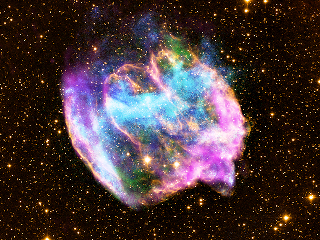
WASHINGTON (PTI): In some good news for space enthusiasts, a Milky Way supernova could be visible from Earth sometime in the next 50 years.
Astronomers at The Ohio State University have calculated the odds to be nearly 100 per cent that such a supernova would be visible to telescopes in the form of infrared radiation.
The study suggests that astronomers have a solid chance of doing something that's never been done before: detect a supernova fast enough to witness what happens at the very beginning of a star's demise.
However, there are only up to 20 per cent chances that the shining stellar spectacle would be visible to the naked eye in the nighttime sky.
A massive star "goes supernova" at the moment when it's used up all its nuclear fuel and its core collapses, just before it explodes violently and throws off most of its mass into space.
"We see all these stars go supernova in other galaxies, and we don't fully understand how it happens. We think we know, we say we know, but that's not actually 100 per cent true," said Christopher Kochanek, professor of astronomy at Ohio State.
"Today, technologies have advanced to the point that we can learn enormously more about supernovae if we can catch the next one in our galaxy and study it with all our available tools," said Kochanek.
Astronomers now have sensitive detectors for neutrinos (particles emitted from the core of a collapsing star) and gravitational waves (created by the vibrations of the star's core) which can find any supernova occurring in our galaxy.
"Despite the ease with which astronomers find supernovae occurring outside our galaxy, it wasn't obvious before that it would be possible to get complete observations of a supernova occurring within our galaxy," doctoral student Scott Adams said.
The astronomers determined that they have nearly a 100 per cent chance of catching a prized Milky Way supernova during the next 50 years.
The astronomers' plan takes advantage of the fact that supernovae issue neutrinos immediately after the explosion starts, but don't brighten in infrared or visible light until minutes, hours, or even days later.
The study appears in The Astrophysical Journal.
 Previous Article
Previous Article Next Article
Next Article











The Indian Air Force, in its flight trials evaluation report submitted before the Defence Ministry l..
view articleAn insight into the Medium Multi-Role Combat Aircraft competition...
view articleSky enthusiasts can now spot the International Space Station (ISS) commanded by Indian-American astr..
view article